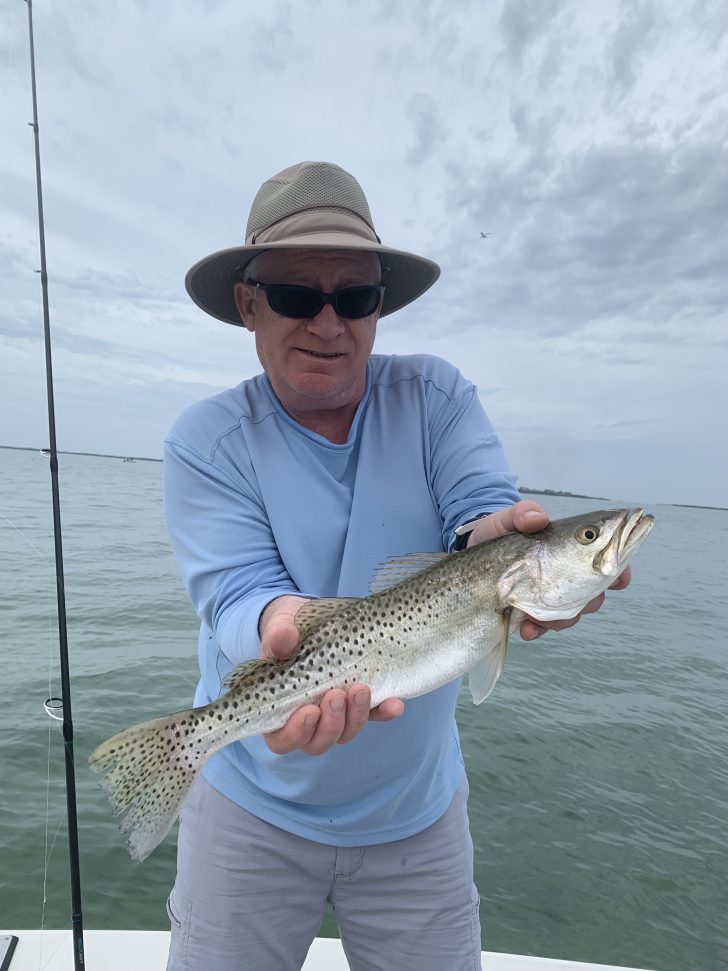This is arguably the best time of year to get in on one of the best bites around. Spotted Seatrout, or Cynoscion nebulosusone, scientifically speaking, one of the “big three” gamefish in our area, begin to spawn in March. They are multiple spawners, meaning they spawn many times throughout an extended spawning season that can run through mid-September in the Tampa Bay Area. For the angler, this means lots of concentrated fish and an amazing bite.
Many anglers like to target seatrout in shallow grass beds where they can be found year-round. Almost any healthy, lush sea grass bed will hold some trout. Slow drifting across these flats is a great way to find these fish, and it can be a ton of fun throwing hard-body lures and soft plastics on light spin tackle or fly. But, there’s another terrain to explore that is enticing.
During late Winter and early Spring, spawning seatrout begin to group up around inshore land masses. These fish will hug the perimeter of islands and other structures over a mixture of grass, shells, rock and sand. Not only does it mark the beginning of the spawn, but this is a bait rich place for them to fatten up. When you find them, you’ll usually find them in numbers and chewing aggressively. It can be one of the most spectacular bites you’ll find all year.
An easy way to get in on the fun is to buy live shrimp – the bigger the better – as many of these fish are going to be biggins. It’s not uncommon to find a pile of trout with all fish over the 15-inch minimum, and some well over 20 inches. If you’re handy with a cast net and know where to find scaled sardines, aka “white bait,” they’re often an even better bait which can really stir up the bite. The fishery is usually open year-round with a few exceptions. Check the FWC website for more information on the regulations by geographical area.
My last spotted seatrout mission put me in the southern region of the FWC map, where the limit is three fish per harvester, with a slot limit of not less than 15 inches nor greater than 19 inches total length. The harvester may possess one fish over 19 inches, per vessel; or, if fishing from shore, one over 19 inches per person, included in the bag limit. A buddy and I chose a spot we’ve fished for decades, and it wasn’t long before we found a huge pile of fish with the smallest landed at 17 inches. We also caught a number of fish over the 20-inch mark. So, not only can you find them thick, but big! Our bag limit was six fish between the two of us, but we kept only five fatties. As the saying goes, try not to catch your limit, but limit your catch, so that this resource will be around for future generations.
Not everyone likes to eat these species, but if you cook ‘em up right, spotted sea trout can be terrific. If you harvest, it’s important to keep these fish on ice, as the meat tends to become soft and mushy, if it gets too hot. My favorite way to cook trout is the good ol’ southern tradition, and that’s with hot grease. Fried trout makes great fish tacos. There are, of course, endless recipes online, but you can’t go wrong with frying.

